Current Flow
Electrons is the outer orbits of an atom a attracted to the nucleus by less force than electrons whose orbits are near the nucleus. These outer electrons may be easily forced from their orbits, while electrons in the inner orbits are called "Bound Electrons" since they cannot be forced out of their orbits.
Atoms and molecules in a material are in continuous random motion, the amount of this motion determined by the material, temperature and pressure. This random motion causes electrons in the outer rings to be forced from their orbits, becoming "Free Electrons".
"Free Electrons" are attracted to other atoms which have lost electrons, resulting in a continuous passage of electrons from atoms to atom within the material.
The random movement of the "Free Electrons" from atom to atom is normally equal in all directions so that electrons are not lost or gained by any particular part of the material. When most of the electron movement takes place in the same direction, so that one part of the material loses electrons while another part gains electrons, the net electron movement or flow is called "Current Flow".
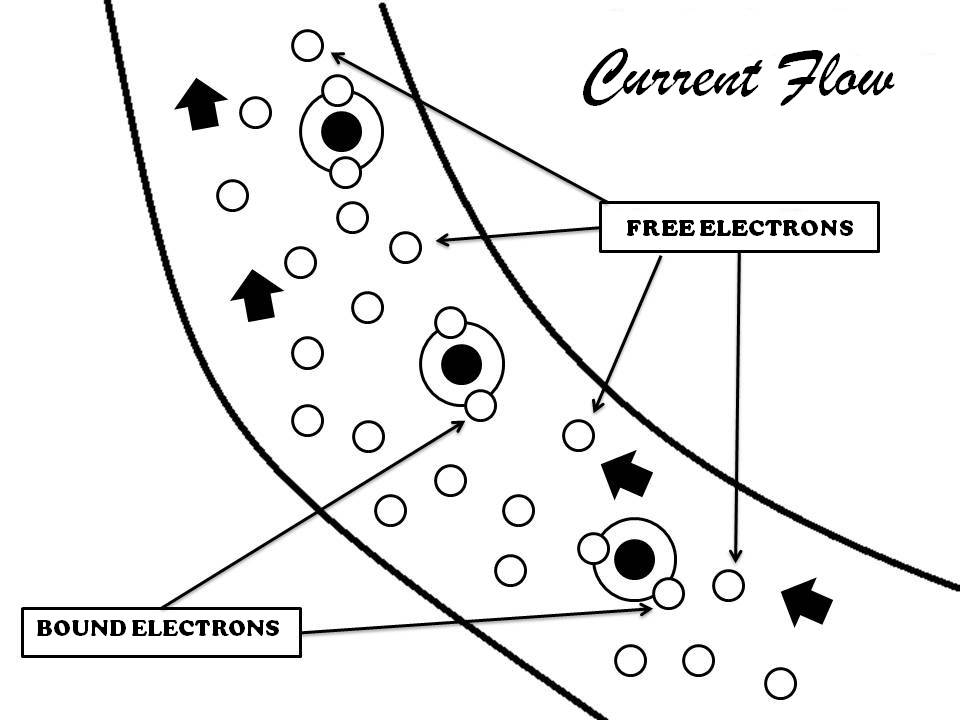
Fig. 1 Current Flow
Suppose you examine more closely what happens inside a material when an electron current bening to flow. The protons have a positive charge, the electrons a negative charge, and the neutrons have no charge at all. If an atom loses several of its free electrons, it then has a positive charge since there are more protons that electrons. You know that like charges repel each other and unlike charges attract. About each positive or negative charge, unseen lines offorce radiate in all directions and the area occupied by these lines is called an "Electric Field".
If an electrons comes near a positive charge, the two fields reach out and attract each other even though there may be some distance between them. It is the attraction between the positive charge on the nucleus and the electrons in the outer orbit that determine the electrical characteristics of a material. If the atom of a particular material is so constructed that there is a very small attraction between the positive nucleus and the outer electrons, the outer electrons are free to leave the atom when they are under the influence of electric fields.
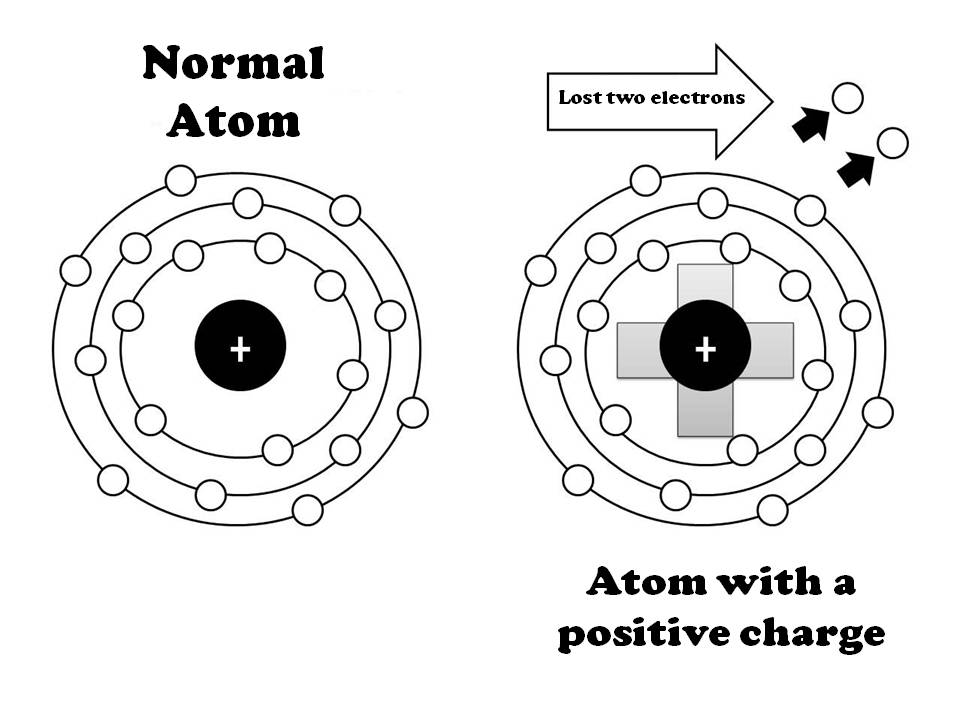
Fig. 2 Normal atom and atom loses electrons
If the excess and shortage of electrons at the two ends of the wire were fixed at a definite quantity, it would only be a very short time until all the excess electrons had traveled through the wire towardthe positive end. The dry cell, however, continues to furnish excess electrons at one terminal and continues to remove electrons from the other terminal, so that the two terminal remain negative and positive for the life of the cell.
Under these conditions a constant stream of electrons begins to flow throungh the wire the instant the wire is connected to the cell. Electrons constantly arriving at the negative end keep applying a pushing force to the free electrons in the wire, and the constant removal of electrons from the positive end keeps applying a pulling force on the free electrons.
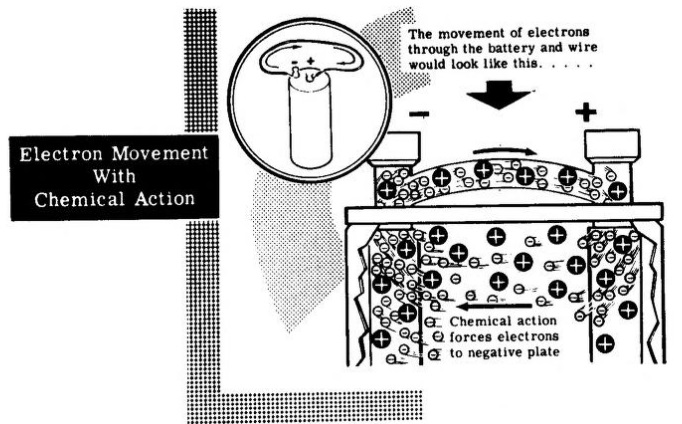
Fig. 3 Movement of electrons in a battery
If you have any difficulty in picturing what is happening inside the wire, suposse you examine a similar situation which makes use of more familiar component. Imagine a large piece of drain pipe in which a largue number of golf balls are suspended by means of wires. Each golf ball represent an atom with its bound electron. Now fill all of the space between the golf ballswith small metal balls the size of air rifle shot (BB shot). Each small ball represents a free electron. Now imagine an army of little men removing the BB´s from one end of the pipe and ramming them back into the other end. This army represents the dry cell.
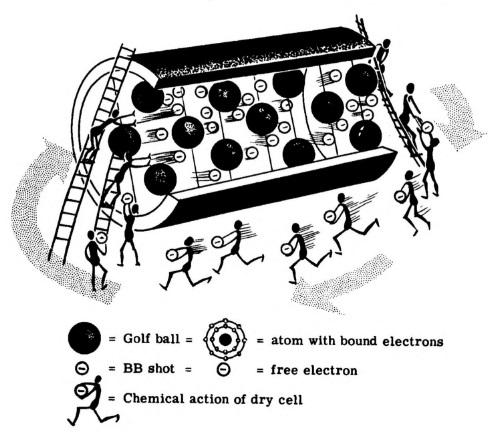
Fig. 4 Example Electrons and a Driver
A very similar situation exists between the drain pipe and a wire carrying an electric current. The main difference is that in the pipe, the metal balls press directly upon each other, while in the wire, the electrons themselves do not toucho but their electric fields press against each other.
Since electrons repel each other and are attracted by positive charges, they always tend to move from a point having an excess of electrons toward a point having a lack of electrons. Your study of the dischargeof static chargeshowed that, when a positive charge is connected to a negative charge, the excess electrons of the negative charge move toward the positive charge.
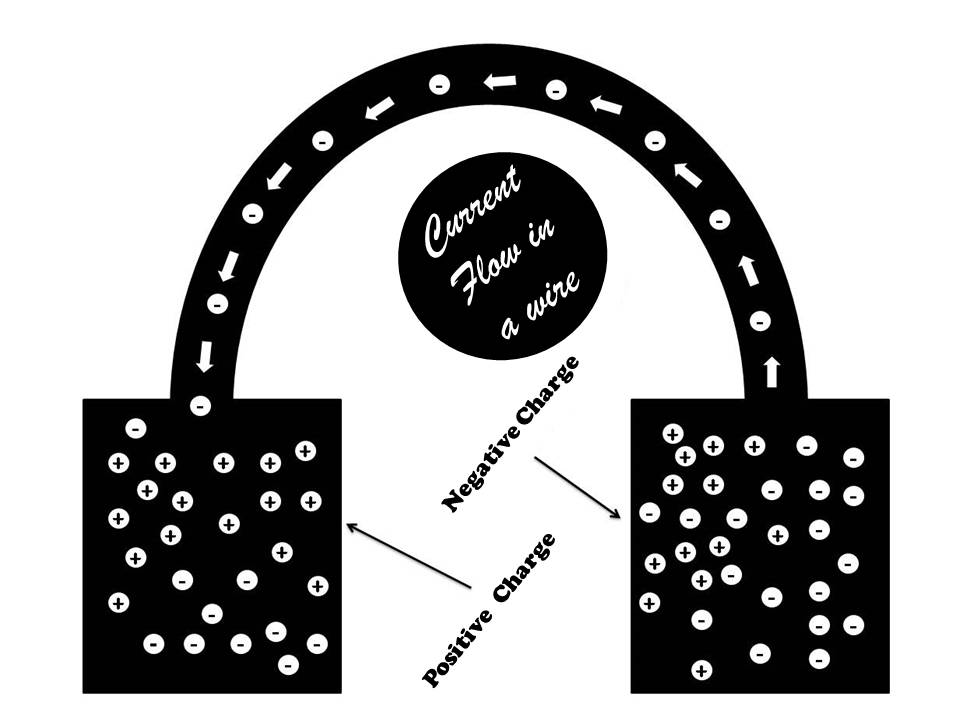
Fig. 5 Current Flow in a wire
Current Flow can take place in any material where "Free Electrons" exist, although we are only interested in the Current Flow in metal wires.
No olvides compartirlo en tus redes sociales
